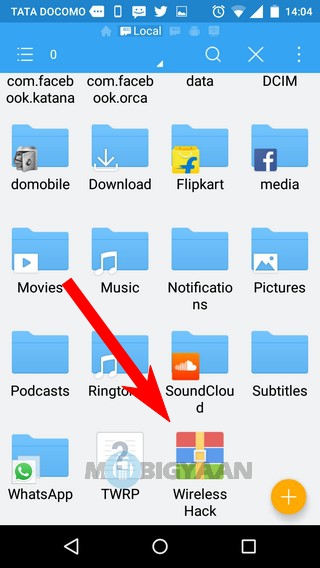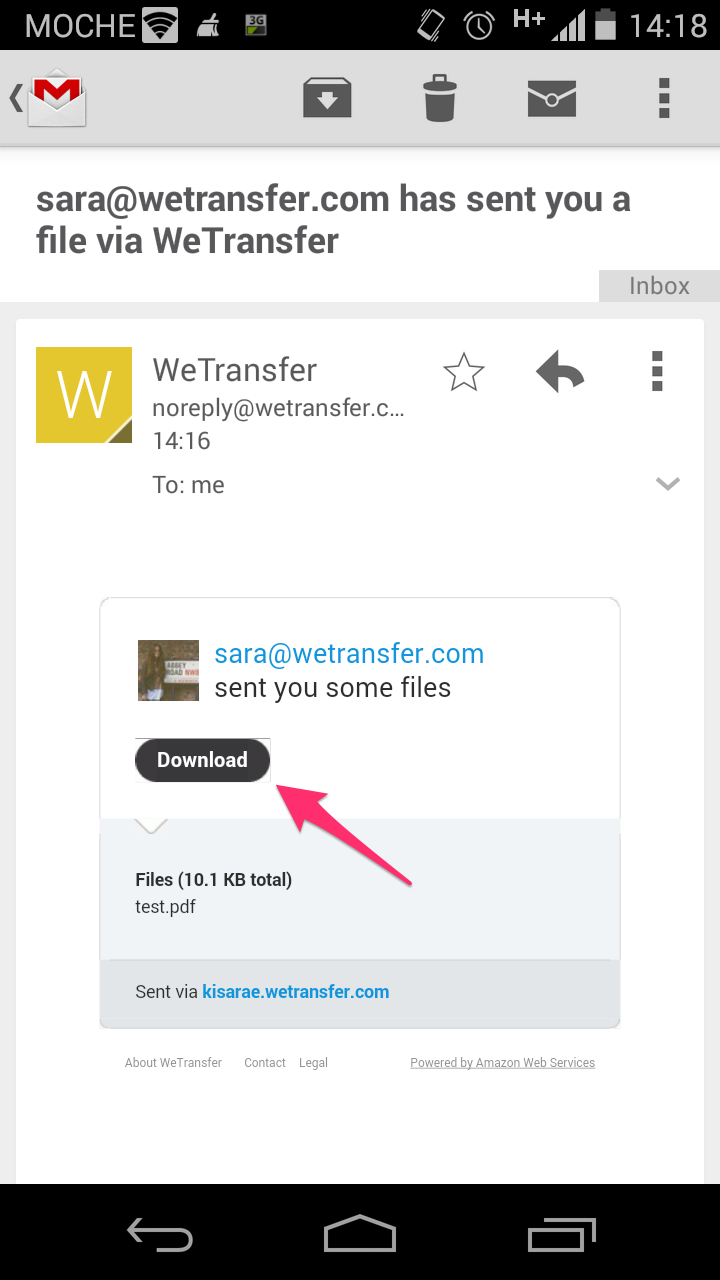With all the things smartphones and tablets can do nowadays and their larger capacities, we tend to put all kinds of files onto them. Being able to compress files before transferring them on and off your device would make things easier.
We previously showed you how to open zip files on an iPhone or iPad. Now, we’ll show you two ways to work with zip files on an Android device.

The first method is using a free file manager app called “ES File Explorer.” Search for this app in the Play Store and install it.
Dec 04, 2011 Download zip files on Android phone? I cant download sime zip files with my motorola phone. It just says download failed or not supported. Is there an app or something that will allow it to download zip files? Report Abuse. How to unzip files on Android mobile devices. All of the audio files available for download in the Media Library are compressed into “Zip” files. The purpose of. The newly created zip file is placed in the same folder as the files you zipped. If you have a Samsung Android device, such as a Galaxy S series phone, Galaxy Note series phone, or Galaxy Tab tablet, we’ll show you how you can use the built-in “My Files” file manager to open and create zip files. Touch the “My Files” icon to open the app.
To open a zip file, use the tree on the left to navigate to the folder containing the zip file and touch the zip file.
The “Select” dialog box displays allowing you to select an app to use to open the zip file. Touch “ES Zip Viewer.”
NOTE: If you want to use this app as the default viewer for zip files, select the “Set as the default app” check box.
The “Compression Manager” window opens in “ES File Explorer” and displays the files in the zip file. Touch and hold on one of the files you want to add to extract from the zip file until it is checked.

Touch the other files you want to extract. If you want to extract all the files, touch the check box button in the upper-right corner of the app window.
To extract the selected files, touch “Extract” at the bottom of the screen.
The “Extract selected files to” dialog box displays. Select the first option to create a folder named the same as the zip file in the same folder as the zip file. The extracted files will be placed in this folder. The “Current path” option extracts the files to the same folder as the original zip file. If you want to choose a different path, select the “Choose path” option. We discuss the second and third options below. Touch “OK” once you’ve made your selections.
If you selected “Choose path”, another field displays, showing a path. Touch the field containing the path.
The “Current path” dialog box displays. Touch folders to navigate to the path where you want to extract the files. Then, touch “OK.”
NOTE: For this example, we chose to create a folder with the same name as the zip file into which the files will be extracted (the first option on the “Extract selected files to” dialog box).
A message displays telling you the extraction process was successful and you are returned to the open zip file in the “Compression Manager.” At the top of the window above the list of files, there are icons for the different windows that are open. The “Compression Manager” window is currently active. Touch the phone icon to go back to the folder on your phone containing the zip file and the extracted files.
In our example, there is a new folder with the same name as the zip file. To access the extracted files, we touch this folder to open it.
The extracted files are now accessible and you can open them on your device.
What if you want to transfer files off of your device? You can compress them into one zip file for easier transferring. We’ll show you how to use “ES File Explorer” to create a zip file from files on your device. Navigate to the folder containing the files you want to compress and select them the same way you selected files in the zip file to extract.
Touch the “More” button in the bottom-right corner of the screen and touch “Compress” on the popup menu.
The “ES Zip Viewer” dialog box displays and the keyboard activates so you can enter a name for the zip file in the top edit box. Touch the down arrow at the bottom of the screen to hide the keyboard so you can see the entire dialog box.
Select whether you want to create a “zip” file or a “7z” file (a versatile compressed archive file format initially implemented by the 7-Zip archiver). Specify the “Compression level,” and enter an optional “Password” to protect the zip file, if desired.
A message displays telling you the compression process was successful and you are returned to the folder containing the files you added to the zip file. The newly created zip file is placed in the same folder as the files you zipped.
If you have a Samsung Android device, such as a Galaxy S series phone, Galaxy Note series phone, or Galaxy Tab tablet, we’ll show you how you can use the built-in “My Files” file manager to open and create zip files. Touch the “My Files” icon to open the app.
Touch “Device storage” or “SD card,” depending on where the desired zip file is located. For our example, we will open a zip file located on the “Device storage.”
Navigate to the folder containing the zip file and touch the file to open it.
The “Extract” dialog box displays and the keyboard becomes active. By default, the files will be extracted to a folder with the same name as the zip file created in the same folder as the zip file. To change the name of that folder, type a name on the “Extract” dialog box. If you can’t see the “Extract” button on the dialog box, it’s blocked by the keyboard. Press the “Back” button on your device to hide the keyboard.
NOTE: The built-in “My Files” file manager app does not allow you to extract specific files. You must extract all the files in a zip file.
We decided to accept the default folder name. Touch “Extract” to create the folder and extract the files from the zip file.
The folder is created in the same directory as the original zip file. Touch the folder to open it.
The files from the zip file are available in the folder.
To compress files using the “My Files” file manager on a Samsung device, navigate to the folder containing the files you want to compress. Touch and hold on the first file you want to select until it is checked.
Once you have selected one file, a check box button displays in the upper-left corner of the screen. To select all the files, touch this button.
NOTE: You can also select specific files by touching each file after the first one is selected.
Touch the menu button (three vertical dots) in the upper-right corner of the screen.
On the popup menu, touch “Zip.”
The “Zip” dialog box displays and the keyboard becomes active. By default, the name of the folder containing the files is used as the name for the zip file. If you want to use a different name, type the new name on the dialog box. If you can’t see the “Zip” button on the dialog box, it’s blocked by the keyboard. Press the “Back” button on your device to hide the keyboard.
Touch “Zip” to create the zip file.

The newly created zip file is placed in the same folder as the files you added to the zip file.
Download Zip File On Android Phone
There are other apps available for Android devices, such as WinZip, RAR for Android, and ZArchiver, that provide additional features, such as encryption, editing archives, and partial archive decompression.
READ NEXTAndroid Zip Apk Free Download
- › Microsoft Still Isn’t Testing Windows 10’s Next October Update
- › How to Use Google Chrome’s Hidden Reader Mode
- › How to Apply a Patch to a File (and Create Patches) in Linux
- › Dark Mode Isn’t Better For You, But We Love It Anyway
- › How to Stop Windows 10 From Automatically Emptying Your Recycle Bin